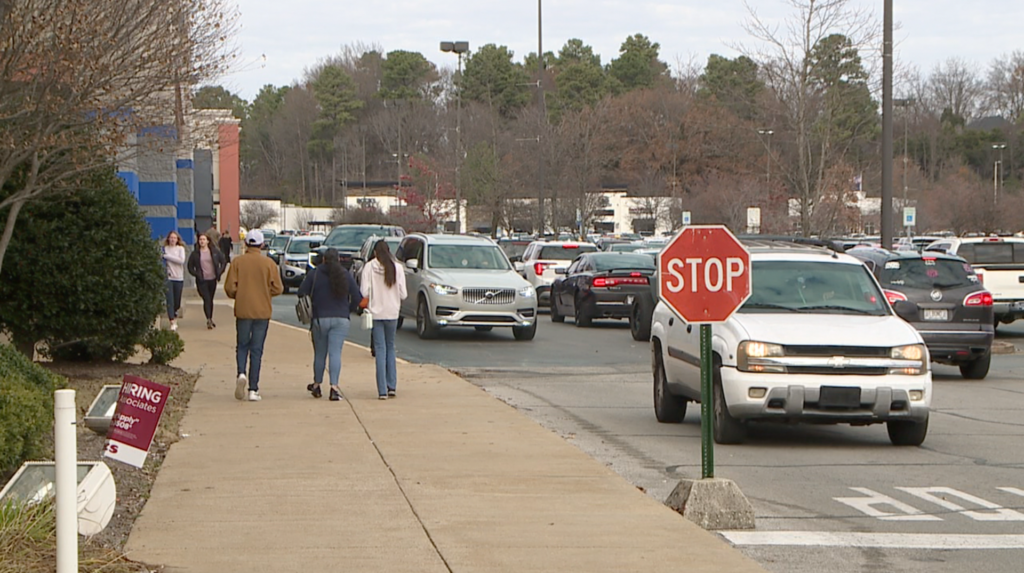Sports
Why It’s Time to Embrace a New Structure For College Sports

College sports are broken. This is not a complaint; it is an observation. The structure that held up college sports for a century has collapsed. It is time for a new one.
Administrators should view this as an opportunity. Stop making reactive moves and implementing half measures to salvage what is already gone. Don’t just adapt; create. Instead of grumbling about what they are forced to do, they should think about what they want. Instead of obsessing over amateurism, they should seek to reemphasize education. Instead of fighting athletes in court, they should partner with them in business.
A new model for college athletics can be better than anything that came before. Better for schools. Better for athletes. Better for coaches. Better for alumni. But it will take bold leadership, ingenuity and a skill that university administrators have not displayed often for the last 20 years: teamwork.
Settlements in House v. NCAA will lead to something that schools swore they would never do: pay college athletes directly for their work. College sports are no longer “just like,” “basically” or “essentially” professional sports. They are professional sports.
So what kind of professional sports should they be?
That question should dominate every meeting, every strategy and every action.
Instead, at the SEC’s annual meetings this week, commissioner Greg Sankey insulted the intelligence of the students his conference purports to educate. Athletes, he said, are “not calling me and saying, ‘I want to be an employee. I want to be taxed like an employee.’”
Imagine Roger Goodell saying NFL players do not want to be employees or taxed like employees. Imagine Sankey, who made more than $3.5 million in the fiscal year ending last summer, saying he wished he was not an employee because—what, he hates hiring an accountant? Nobody turns down a high-paying job because they don’t want to pay taxes—and college athletes are already doing the job. They would just be turning down salary and/or benefits.
Sankey said what college presidents want to hear. It was the kind of disingenuous, obstructive tactic administrators have used for years.
That strategy keeps failing. Three years ago, Jennifer Abruzzo, the general counsel of the National Labor Relations Board, issued a memo stating certain college athletes “are employees under the National Labor Relations Act, and, as such, are afforded all statutory protections.” Abruzzo also said they “have the right to act collectively to improve their terms and conditions of employment.” Abruzzo’s statement was not an official NLRB ruling, but it was a signal of what will come.
University presidents are hoping Congress saves them from having to declare that college athletes are school employees. But that is a losing mentality, grounded in denial. Again: College sports are pro sports. That means university presidents are operating professional sports leagues.
A well-run business sees what is coming and positions itself for it. That means assuming college athletes will be considered employees, assuming they will want to unionize and being proactive about what that might mean.
There are many practical problems with making athletes full-time employees of their schools. Most Power 5 universities are public, and union laws vary by state. Texas, for example, prohibits collective bargaining by public-sector employees. That puts athletes there at a disadvantage relative to their peers in most states.
Football players would, presumably, want to form their own bargaining unit, separate from other athletes, because they generally bring in the most revenue. Separating groups of employees by gender, and then paying the male employees more, raises obvious legal questions.
If the 18 Big Ten football teams operate under 18 different sets of workplace rules, with a wide range of union protections, that would cause chaos for schools. It would also weaken the players, because labor’s power comes from solidarity. So let’s think creatively.
What if Big Ten football players were scholarship students at their schools—but employees of the Big Ten? Philosophically, this would be more in line with how college sports should operate. Universities should treat student-athletes like students. But student-athletes should be compensated for being professional athletes.
As it stands now, media-rights money goes to conferences, which then distribute it to universities. What if the leagues sent some of that money directly to players?
Athletes would, of course, still represent schools. But they wouldn’t be school employees. They would be students with lucrative jobs.
Putting football players from different schools under one corporate roof would allow them to collectively bargain, which would give them power they have never had. But it would also allow schools to help shape the landscape. Instead of instituting rules and hoping they hold up in court, universities could bargain for them.
Administrators and coaches generally have two fears. One is the complete loss of control. The other is they will lose the good stuff from the amateur era: the camaraderie, team-building and educational benefits that come from spending four or five years on one campus.
If players are free agents every day of the year, and schools can openly offer them, then both of those fears become reality. This is already happening: NIL incentivizes players to enter the transfer portal so they can maximize their worth. It’s a headache for coaches, and it penalizes the kinds of players schools should want to reward: good students and team players who love their school and don’t want to leave.
Paying athletes is inevitable, but how they get paid is an enormous and important question. The goal should be to share revenue with players after they fulfill certain criteria, rather than just bid for their services before they arrive.
Let’s say, for example, that $20 million is allotted for Mississippi State’s football players. (I chose the number randomly.) Which of these structures is better?
Structure 1: Newly hired coach Jeff Lebby chooses how to spread the $20 million around.
Structure 2: A players’ union and central corporate entity agree to a formula to dole out the $20 million.
Structure 1 would incentivize Lebby to spend on recruits and transfers, while lowballing players who are already in the program. If Lebby started winning, players would threaten to transfer unless they got a raise. Every time Lebby addressed the team, players would see him through the prism of how much he chose to pay them.
Now look at Structure 2. A collectively bargained formula could increase pay for every year a player spends on campus. It could require players to hit certain academic mileposts to get their full share of revenue. It could even punish schools for running players off or for poor academics; if a school’s Academic Progress Rate was too low, then a percentage of a team’s revenue could be redistributed to players at other programs.
Lebby, meanwhile, could just coach the team. Players could not complain to him about their salaries because he would have no control over them.
Would schools still pay players under the table? Of course! That has happened forever. Coaches would still steer NIL deals toward recruits and transfers, and catching them would remain difficult. But if a Washington State Cougars football player gets a nice check for his part in the commercial enterprise, and his union has agreed to terms that force transfers to sit out a year, he will be far more likely to stick around—and maximize his NIL value where he is.
And speaking of Washington State …
Athletic departments are corporations with fight songs, and in recent years, they behaved like the worst kinds of corporations: making shortsighted moves to boost revenue and sell a growth story to analysts, with no regard for consumer preference, the effect on the workforce or the long-term health of the industry.
We repeat: College sports are pro sports. So let’s think of them that way.
Most professional sports leagues are governed by two basic economic principles. One is that, though teams compete against each other on the field of play, they are business partners. The other is that the labor force is a collection of individuals with varying value to the industry.
College sports leagues have operated under the inverse of those two principles: Schools are independent economic actors; and everybody in the labor force has essentially the same value (one athletic scholarship) to the industry. The second principle is disintegrating. But schools continue to operate as independent economic actors, to cataclysmic effect.
Imagine if pro sports leagues operated as college conferences do. The Kansas City Chiefs could jump to the NFC East, which would of course have its own TV contract, the largest in sports. What network wouldn’t want to see Patrick Mahomes against the Dallas Cowboys twice per season? Of course, the Cowboys wouldn’t want to face Mahomes—and because Mahomes could leave Kansas City at any time and instantly play somewhere else, the Cowboys would sign him.
Because this scenario involves pro sports, there is no educational mission to corrupt. The problem is purely economic, but it is still enormous: The wealthiest teams would have an unfettered ability to ransack other rosters and blow up other divisions. The NFL would be a much less appealing product and much less stable financial operation. Denver Broncos fans want their team to beat the Las Vegas Raiders, not put them out of business.
Meanwhile, schools cut private deals with other conferences, stunning their colleagues. Commissioners poach each other’s teams. They fight over pieces of the media-rights pie and try to jigger postseasons to benefit themselves.
Their justification is that they must cover the expenses of their large workforce. But the workers—the athletes—don’t really benefit.
The NCAA says it has 192,000 Division I athletes. Conference realignment affects all of them—but virtually every conference move is driven by a single sport, football, which only 8% of workers play. Every major football decision is driven by the Power 5 conferences. Two behemoths, the Big Ten and SEC, dictate what happens to the rest of the Power 5.
So when just two schools, USC and UCLA, left the Pac 12 for the Big Ten and its revenue, they caused an avalanche. Washington and Oregon also bolted for the Big Ten. Colorado left for its old league, the Big 12. Arizona and Arizona State are headed to the Big 12. Stanford and Cal—two of the best schools on the Pacific coast, with rich, championship-filled histories in many sports—scrambled to join the Atlantic Coast Conference. Washington State and Oregon State reached scheduling agreements with the Mountain West, but they still haven’t landed in another conference.
Meanwhile, these moves will worsen the college experience of thousands of athletes. Their rivalry games will mean less. Their parents will see fewer of their games. They will spend more time on planes and less time in class. Last season, Oregon’s women’s basketball team played 16 conference games in the Pacific time zone and two in the Mountain. Next season, the Ducks will play 10 conference games in Pacific, four in Central and four in Eastern.
Across all sports, hundreds of college teams must deal with the fallout of a move driven by only two: USC and UCLA football.
Most incredibly, though: This isn’t even better for USC and UCLA football.
The stakeholders at USC and UCLA—athletes, alumni, employees, students and fans—are worse off. They also lose long-standing rivalries and must travel further, at greater expense, for games. Their chances of winning championships are also diminished: UCLA, which hasn’t won its league since 1998, is now in a much tougher one.
Even if you view college sports purely as a business, it is a business that does not serve customer interests. The Big Ten now has 18 fan bases, and it is likely that a majority of every one is unhappy with the makeup of the conference.
Now, imagine what could be:
Longtime rivals sharing conferences. Athletes getting compensated for their work—but not by their schools. A clear set of rules. A reduction in the number of transfers, so more athletes get a traditional college experience—and more schools get a semblance of stability.
We repeat: These are pro sports. So what kind of pro sports should they be?
Instead of conferences negotiating with football players in their league, what if one centralized operation negotiated with all FBS football players? And what if, instead of conferences having their own TV deals, the money all went in one pot?
That sound you hear is Sankey and Big Ten commissioner Tony Petitti installing malware in your browser. Leagues are so accustomed to competing against each other that they can’t fathom voluntarily giving up revenue—and conference commissioners like being the ones in charge.
But again, look at the NFL. In the early 1960s, NFL teams agreed to share national-TV revenue evenly, with New York Giants owner Wellington Mara leading the way. In the short term, that approach cost Mara money—but in the long term, it made the NFL much more prosperous, and that benefited everybody.
There was a time when it made sense for conferences to negotiate their own TV deals, just as it once made sense for the National and American Leagues to have their own presidents. But that time is long gone.
What is better for business? A system that kills the Oklahoma–Oklahoma State rivalry, turns the Apple Cup into a nonconference game and put Texas–Texas A&M on ice for 13 years—or one that keeps the Chicago Bears and Green Bay Packers in the same division for the 92nd straight year?
For too long, university presidents have followed conference commissioners around like eager puppies hoping for a biscuit. Schools want money, TV networks have it and commissioners have been the conduit between them. That simple formula has totally destabilized college sports.
We don’t have to live in a world where USC’s volleyball team must travel to Rutgers for a Big Ten match, or where Stanford—Stanford!—acts out of desperation. Don’t presidents and athletic directors want a college-sports world where Stanford is relevant? Centralize the operation, spread the TV money around more evenly—and then restore conference structures that people actually want.
Some schools would lose revenue. But they would all save on costs, and since they will be sharing revenue with athletes, some of that lost revenue will leave their pocket regardless. Spreading it to other schools would create a better environment for more students—which is what educators claim they want. But it would also be better for more coaches and more administrators.
In the current college sports ecosystem, the rich eat the poor. That has diminished the appeal of a lot of jobs. Mid-major coaches can’t keep their best players on campus. Even bluebloods lose top players to the transfer market. It’s a nightmare for coaches, and it often makes a mockery of secondary education, but whining about it accomplishes nothing.
Declare athletes employees of a central commercial entity. Recognize their right to unionize. Then bargain for a system that works better for both sides.
This can be done. People just have to want to do it.
Athletic departments can create the best kind of corporation: one providing stable jobs for hard-working people who add significant value that can’t easily be quantified. People with those jobs tend to like them—and they tend to stay in one place for a long time. Imagine that.










